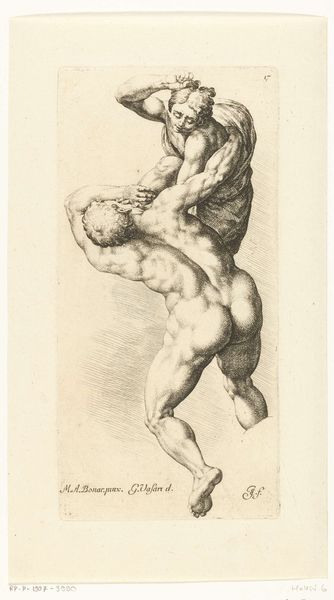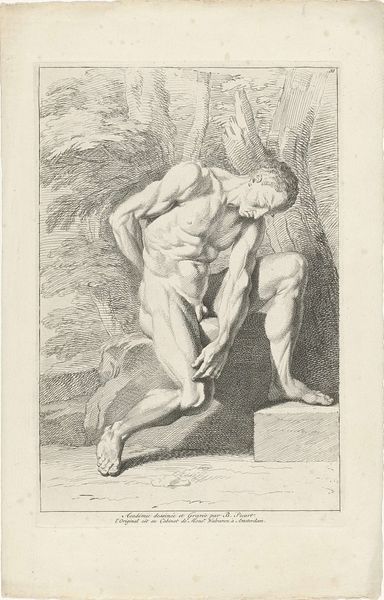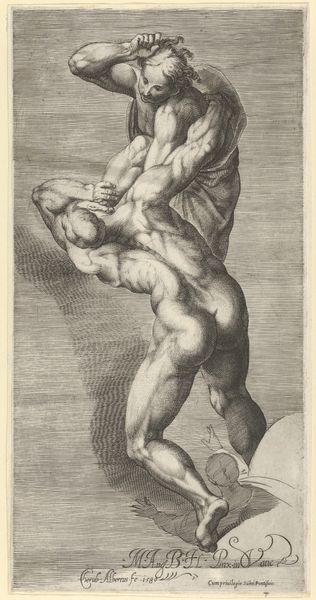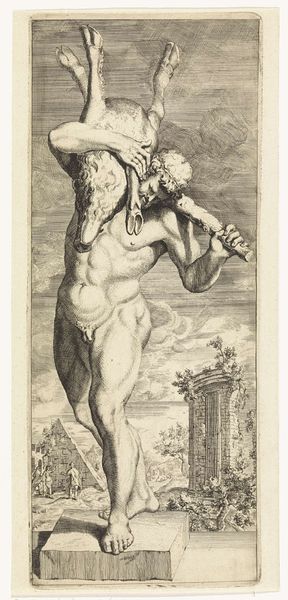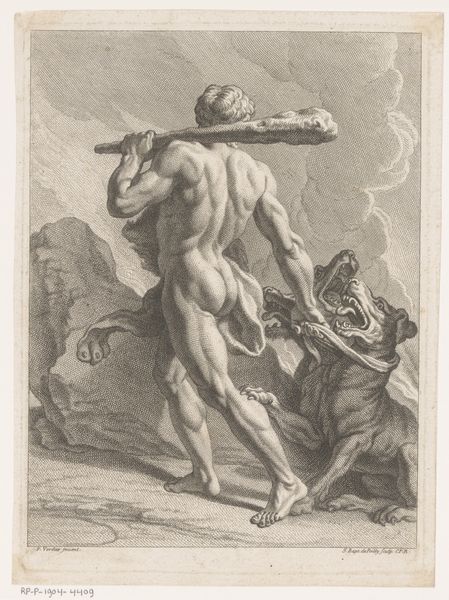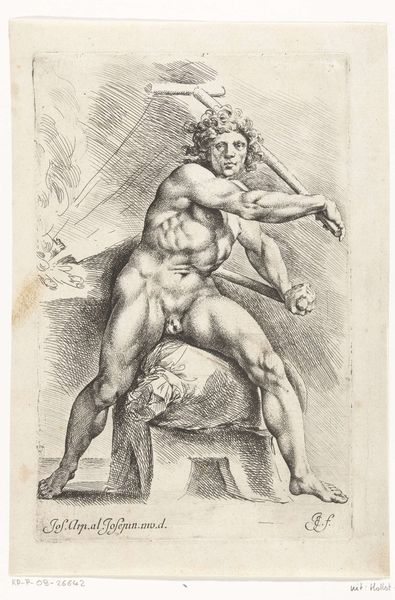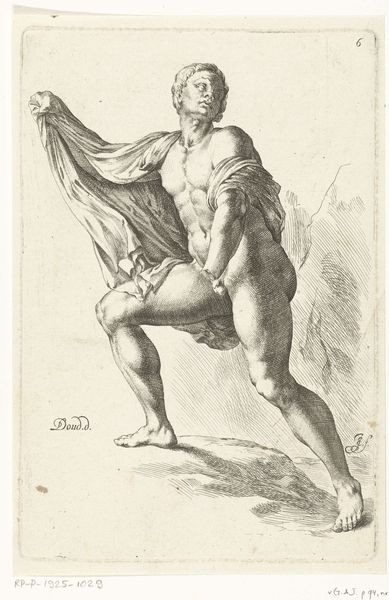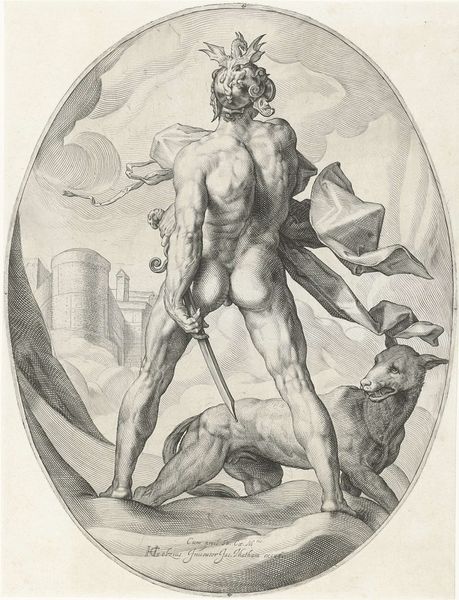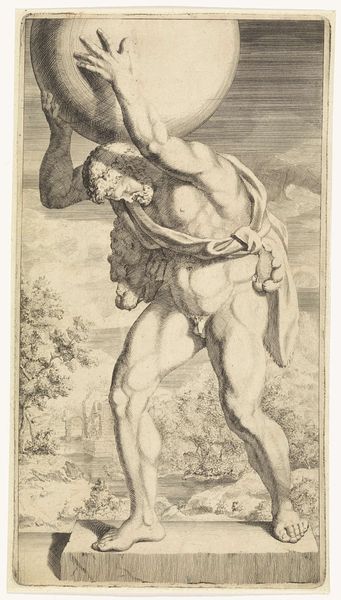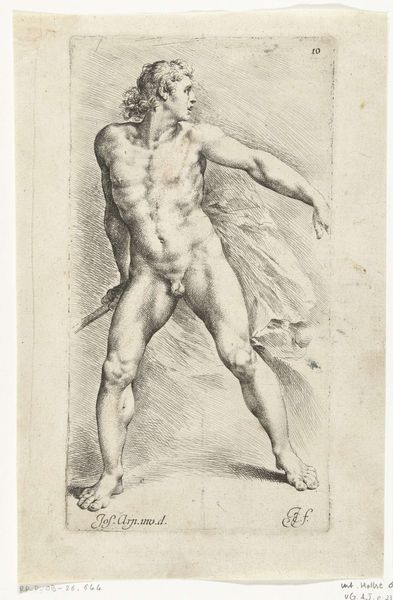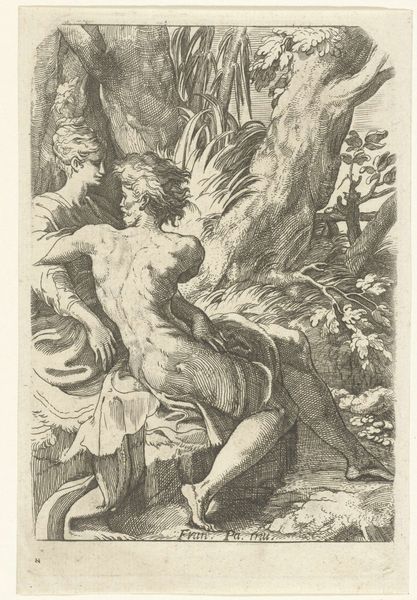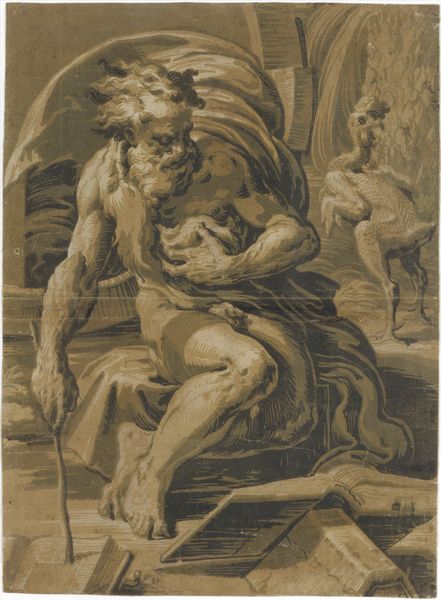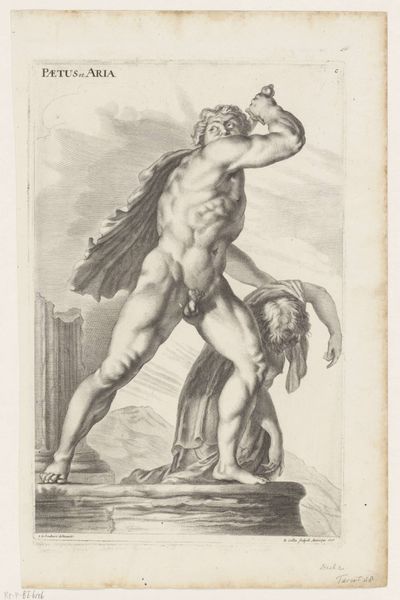
drawing, ink, engraving
#
drawing
#
ink drawing
#
allegory
#
baroque
#
figuration
#
ink
#
history-painting
#
nude
#
engraving
Dimensions: height 228 mm, width 156 mm
Copyright: Rijks Museum: Open Domain
Editor: We're looking at "Cain Fleeing from God's Wrath," a drawing by Jan de Bisschop, made between 1668 and 1671. It’s rendered in ink, and you can see such detailed line work despite its age. The figure’s muscularity immediately jumps out, but he's hunched and seems burdened by… something. What compositional elements strike you most powerfully in this piece? Curator: The dynamism created through line is certainly captivating. Observe how the swirling, dense lines articulate the billowing clouds versus the comparative clarity defining Cain’s form. This contrast enhances the dramatic tension. Do you note the implications of the figure being seen from the rear? Editor: That's a good point. We're denied direct eye contact, and there’s a vulnerability to him. It makes me wonder about the negative space surrounding him; it's almost like he’s trapped. Curator: Indeed. Consider the strategic employment of light and shadow. Notice the intense cross-hatching that models his physique and imbues it with depth. How might this emphasis on chiaroscuro influence our interpretation of his emotional state? Editor: It intensifies the drama, creating a somber, heavy atmosphere. It really emphasizes his isolation. So, is the artist deliberately using light to convey that emotional turmoil? Curator: Precisely. By manipulating tone, Bisschop constructs not just form, but a psychological landscape. The formal properties articulate his internal anguish with incredible effect. Editor: Seeing how form and content are so interwoven is illuminating! Thanks. Curator: And understanding such integration allows for deeper artistic engagement. It has been a worthwhile exploration.
Comments
No comments
Be the first to comment and join the conversation on the ultimate creative platform.
